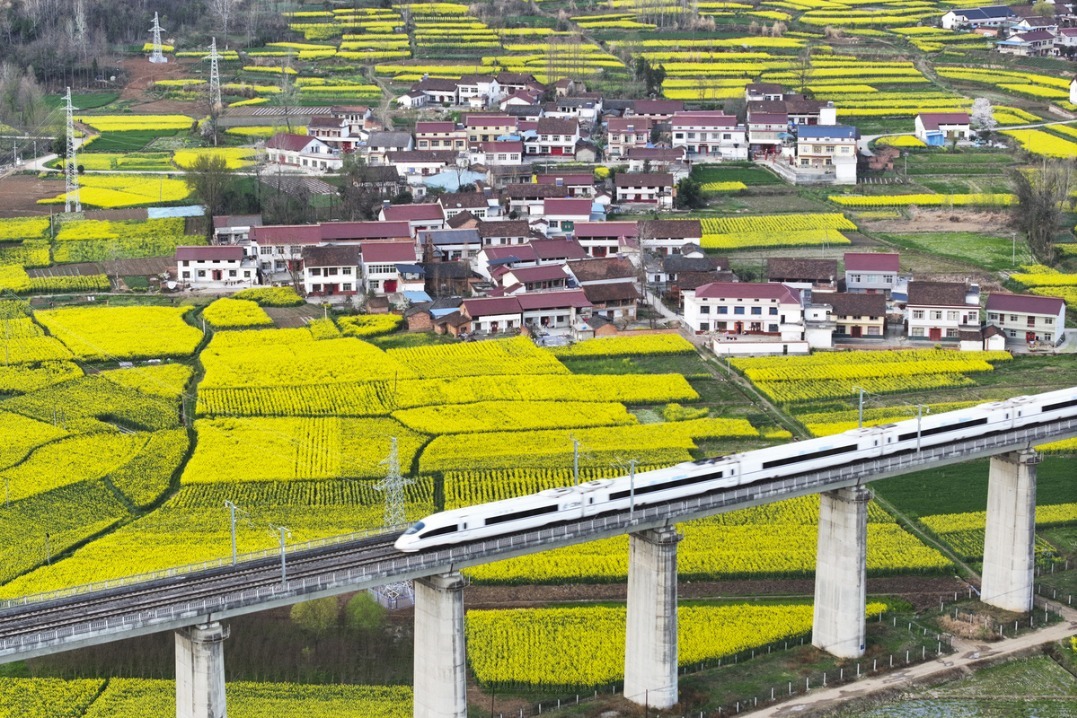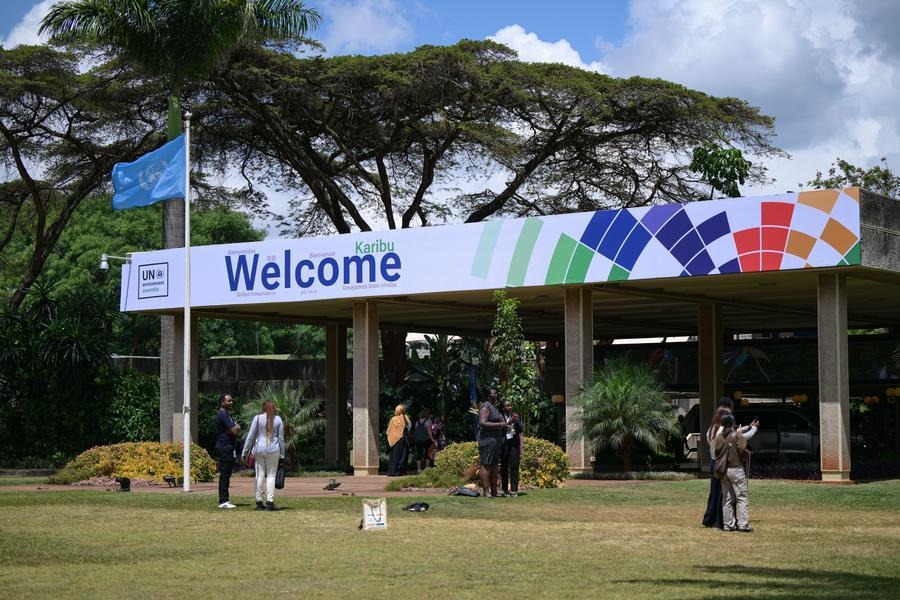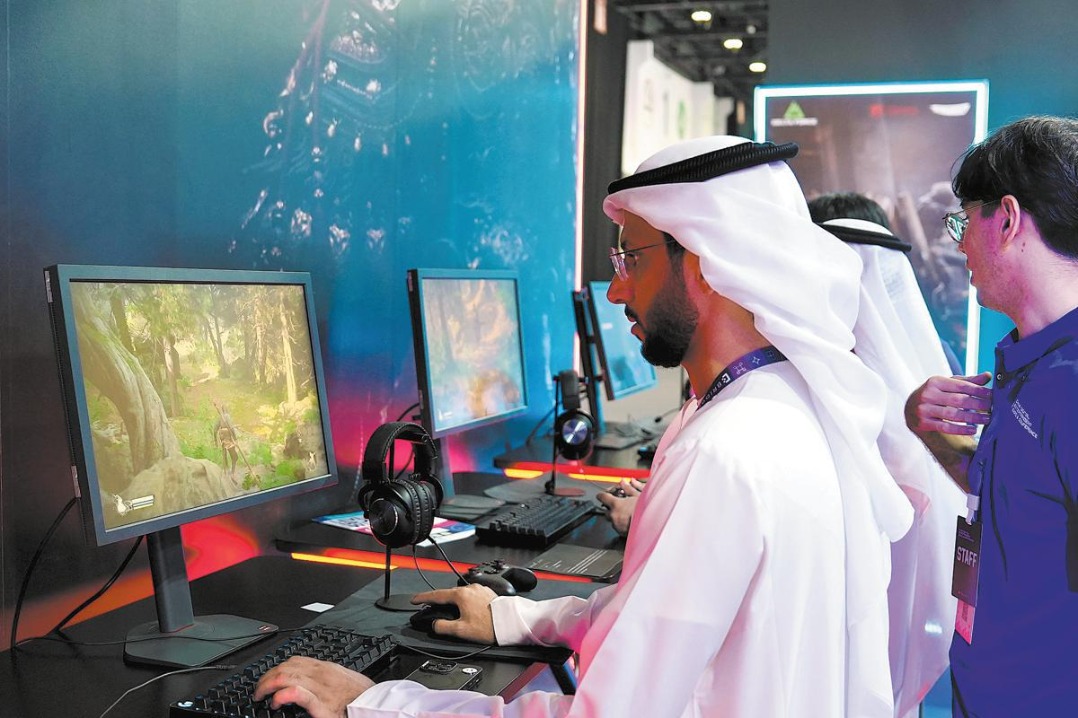Infotainment hits the road where wonder meets wanderlust
By YANG FEIYUE | CHINA DAILY | Updated: 2024-06-10 09:03

Since spring, natural and historical destinations have been popular with domestic travelers seeking enjoyment and education.
More than 11,000 students in over 70 educational tour groups from around the country, including such places as Beijing, and Guangdong and Sichuan provinces, arrived in Dunhuang in the first four months of the year.
They accounted for just over one-third of all travelers to the city in northwestern China's Gansu province, the local culture and tourism bureau reported.
Visiting the Mogao Caves, experiencing painted clay, drilling wood to make fire, and studying local history and culture are among the most popular learning experiences for students, according to the bureau.
Qu Ruoxi, a middle schooler from Beijing, appreciated sand bottle art during her trip to Dunhuang at the end of April. The genre features colored sand carefully layered inside a clear glass bottle to create intricate designs and images.
Under the teacher's guidance, she meticulously drizzled grains into the bottle and then outlined them with a wire. Before long, a seagull appeared to soar above the yellow sand.
"The process of making sand bottle art is very interesting. There are both random and precise parts. I can use different colors, according to my own ideas, before outlining them to create a vivid piece of art," the girl explains.
More than 20 educational programs about local Silk Road culture and wilderness survival skills have been launched at the city's Yangguan Pass scenic area.
They are intended to enrich children's learning experiences, appreciation of ancient wisdom and cultivate kids' spirit of independence, cooperation, inquiry and practical abilities, says Wu Fengping, deputy curator of the Yangguan Museum.
In 2016, the Ministry of Education and 10 related departments issued a guideline for promoting educational trips for primary and secondary schools. The guideline states that such trips are aimed at improving educational quality through experiential learning and study, based on research.
In the following years, many regions, including Dunhuang, started to introduce their own policies to boost the educational travel market. Since 2022, the city has launched a cultural study season that lasts from Dec 1 to March 31.
New learning tours with the themes of culture, art, intangible cultural heritage, folk customs and natural science have been developed to satisfy the diverse learning needs of tourists of different ages, according to local authorities.
"We are making study tour programs one of our main focuses this year," says Wang Qi, a staff member with a tour service provider in Dunhuang.
Special courses, such as mud painting, and Dunhuang music and dance, will be launched to immerse students in Dunhuang culture and enhance their artistic literacy, Wang adds.
In Shennongjia national park in North China's Hubei province, the pristine ecosystem, rich biodiversity, unique geological and climate conditions, and local customs make it an ideal destination for nature education.
At the park's geological science museum, augmented reality technology is integrated with other technologies, including simulated environments, 3D modeling and real-time video displays, to re-create grand scenes of geological movements millions of years ago.
The park has established multiple educational routes for primary and middle school students, such as those featuring bird watching and natural science popularization.
It has hired more than 50 science education staffers to offer guidance in multiple fields, including biodiversity, natural geography, geological formations and environmental protection.
Additionally, it actively collaborates with universities and travel agencies, training and recruiting science education volunteers each year to jointly carry out educational activities.
More than 3,000 participants of educational tours visited last year.
"In recent years, Shennongjia has used educational tours to fully showcase its biodiversity, geological features and natural resources, such as its flagship species, the golden snub-nosed monkey," says Tan Yuxuan, a tour guide at Shennongjia.
"Shennongjia's value as a UNESCO World Natural Heritage site is highlighted by learning through tourism," Tan adds.
Shennongjia is planning to build a rare plants facility for scientific research, education and tourism.
Efforts will be made to turn Shennongjia into a national natural education classroom, stimulating more people to pay attention to and participate in popular science and education work, says Dai Guangming, deputy director of the park's administration.
























